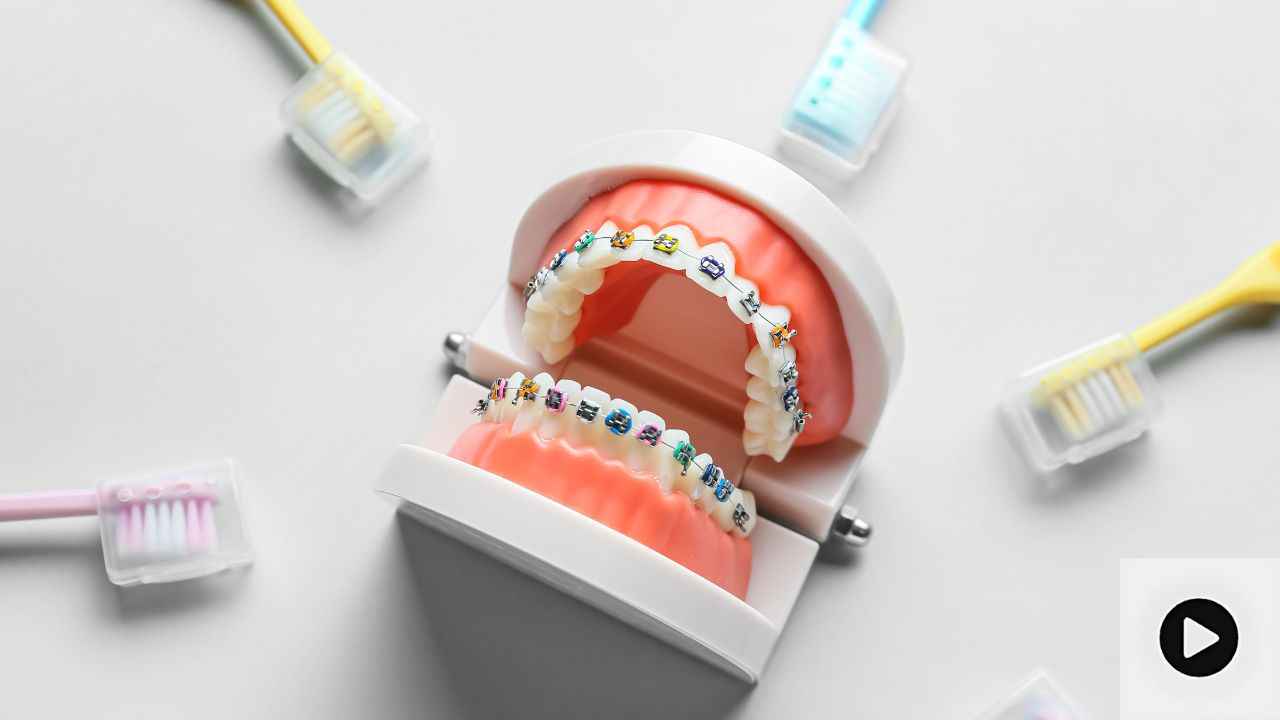Starting orthodontic treatment is an exciting step toward achieving a healthier, straighter smile—but it also comes with new responsibilities, particularly when it comes to oral hygiene. Braces introduce brackets and wires that can trap food and plaque, making it easier for decay and gum issues to develop if care isn’t taken.
With the right tools and techniques, keeping your teeth and gums clean during treatment doesn’t have to be difficult. Whether you’re just starting your journey or looking to improve your daily routine, this guide will help you understand what it takes to maintain excellent oral hygiene with braces.
Why Oral Hygiene Is So Important with Braces
Braces create small spaces where food particles and plaque can accumulate. Without proper cleaning, this can lead to:
- Tooth decay — Plaque buildup leads to cavities around brackets or near the gumline.
- Gum disease — Inflamed, bleeding gums are a sign of gingivitis, the first stage of gum disease.
- White spots — Decalcification (permanent white marks) can form around brackets if plaque isn’t removed.
- Bad breath — Poor hygiene results in bacteria buildup and noticeable odors.
Maintaining a strong hygiene routine not only protects your teeth during treatment—it also ensures that when the braces come off, your results are as beautiful and healthy as possible.
Daily Hygiene Routine with Braces
Staying on top of your oral hygiene means building a daily routine that’s consistent and thorough. Here are the essentials:
Brushing
- Brush after every meal or at least twice a day.
- Use a soft-bristled toothbrush or an electric toothbrush with an orthodontic head.
- Angle the brush to reach above, below, and around each bracket.
- Brush for at least two full minutes.
Flossing
- Floss once daily, using a floss threader or orthodontic flossers to reach between wires and teeth.
- Water flossers can also be effective for flushing out debris and cleaning along the gumline.
Rinsing
- Use an antimicrobial or fluoride mouthwash once a day.
- Rinse thoroughly after brushing and flossing to reduce bacteria and strengthen enamel.
Tools That Help
- Orthodontic toothbrush — Designed to clean around brackets more effectively.
- Interdental brushes — Small brushes that fit between brackets and under wires.
- Floss threaders — Make it easier to maneuver floss between tightly spaced teeth.
- Water flosser — A gentle but powerful tool that rinses away plaque and food particles.
- Travel brush — Handy for cleaning your teeth after lunch or snacks on the go.
Tips for Eating with Braces
What you eat—and how you eat—can also affect your oral health and the condition of your braces.
- Avoid sticky or hard foods — Gum, caramel, popcorn, and hard candy can damage wires and loosen brackets.
- Cut food into small pieces — This makes it easier to chew and reduces pressure on brackets.
- Limit sugary snacks — Sugar feeds plaque-causing bacteria, which can lead to cavities.
- Rinse your mouth if you can’t brush — If brushing isn’t an option right after a meal, rinsing with water can help remove debris.
Visiting the Orthodontist and Dentist
Regular professional care is just as important as your at-home hygiene routine. During orthodontic treatment, continue visiting:
- Your orthodontist — For adjustments and to check for any issues with appliances.
- Your general dentist — For cleanings and exams, typically every six months (or more frequently if recommended).
In some cases, your dentist may recommend additional fluoride treatments or more frequent cleanings to ensure your teeth stay healthy throughout your treatment.
Common Hygiene Mistakes to Avoid
Even with the best intentions, it’s easy to fall into habits that can compromise your oral health. Be mindful of these common pitfalls:
- Skipping flossing — It may feel tedious, but it’s crucial for reaching areas your toothbrush can’t.
- Using too much pressure — Brushing too hard can damage gums and wear down enamel.
- Neglecting the gumline — Plaque tends to collect here, especially around brackets.
- Ignoring discomfort — Sore gums or bleeding during brushing can be signs of inflammation or infection that should be addressed.
Consistency is key. A few extra minutes of care each day can prevent months of unnecessary treatment or additional dental procedures later on.
Building a Healthy Smile for the Future
Good oral hygiene habits developed during orthodontic treatment often carry over after the braces come off. By practicing thorough daily care now, patients not only protect their current progress but also set the stage for a lifetime of better dental health.
Plus, when your braces are removed, you’ll be able to enjoy your beautifully aligned smile—without staining, cavities, or marks that could have been avoided with just a little extra effort.
Taking care of your smile now means you’ll love it even more later. For personalized guidance on hygiene during treatment, Team Orthodontics is here to support you every step of the way. Schedule a visit today and keep your orthodontic journey on track.
